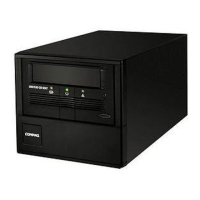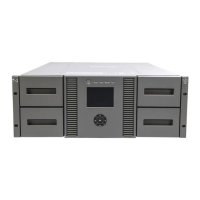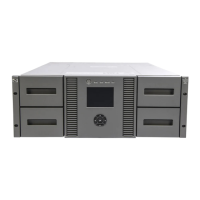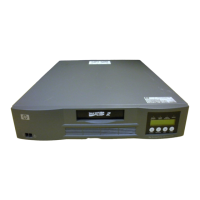Finding error code information on the OCP
When an error first occurs, the error message and error code are displayed on the OCP, as shown
in Figure 65.
Figure 65 Initial OCP error message
.
The code 9B is the main error code, and 37 is the error sub-code.
If you review the Error Log in the Support menu, the OCP error log displays the error code, as shown
in Figure 66.
Figure 66 Error code in the OCP Error Log
.
The code 9B is the main error code, 37 is the error sub-code, and 31 is sub-code specific information
for factory use only. When you press Enter, the OCP displays the error message, as shown in Figure
67.
Figure 67 Error message in the OCP Error Log
.
If you press Next, the OCP will display additional information, if available, as shown in Figure 68.
Figure 68 No additional information in the OCP error log
.
If you press Next again, the OCP will display the date and time in the format: YYYY-MM-DD followed
by the time in 24–hour clock format, where 1:00 pm is 13:00, as shown in Figure 69.
Figure 69 Date and time in the OCP error log
.
Finding error code information on the RMI
You can find error codes on the RMI Support: Autoloader Logs page. The available logs are: Error
Trace, Informational Trace, Warning Trace, Configuration Change Trace, and Standard Trace.
The log entries are displayed in order of most recent to oldest. The format for the log entries is:
YY.MM.DD HH.MM.SS.ss LIB/ERR<80 89 62 40
• YY.MM.DD — the date displayed as Year.Month.Day
• HH.MM.SS.ss — the time displayed as Hour.Minute.Second.Hundredths fo a second
• First code — hard or soft error. The code after LIB/ERR (80 in the example) will be 80 or 40. 80
indicates a hard error, 40 indicates a soft error.
Troubleshooting130

